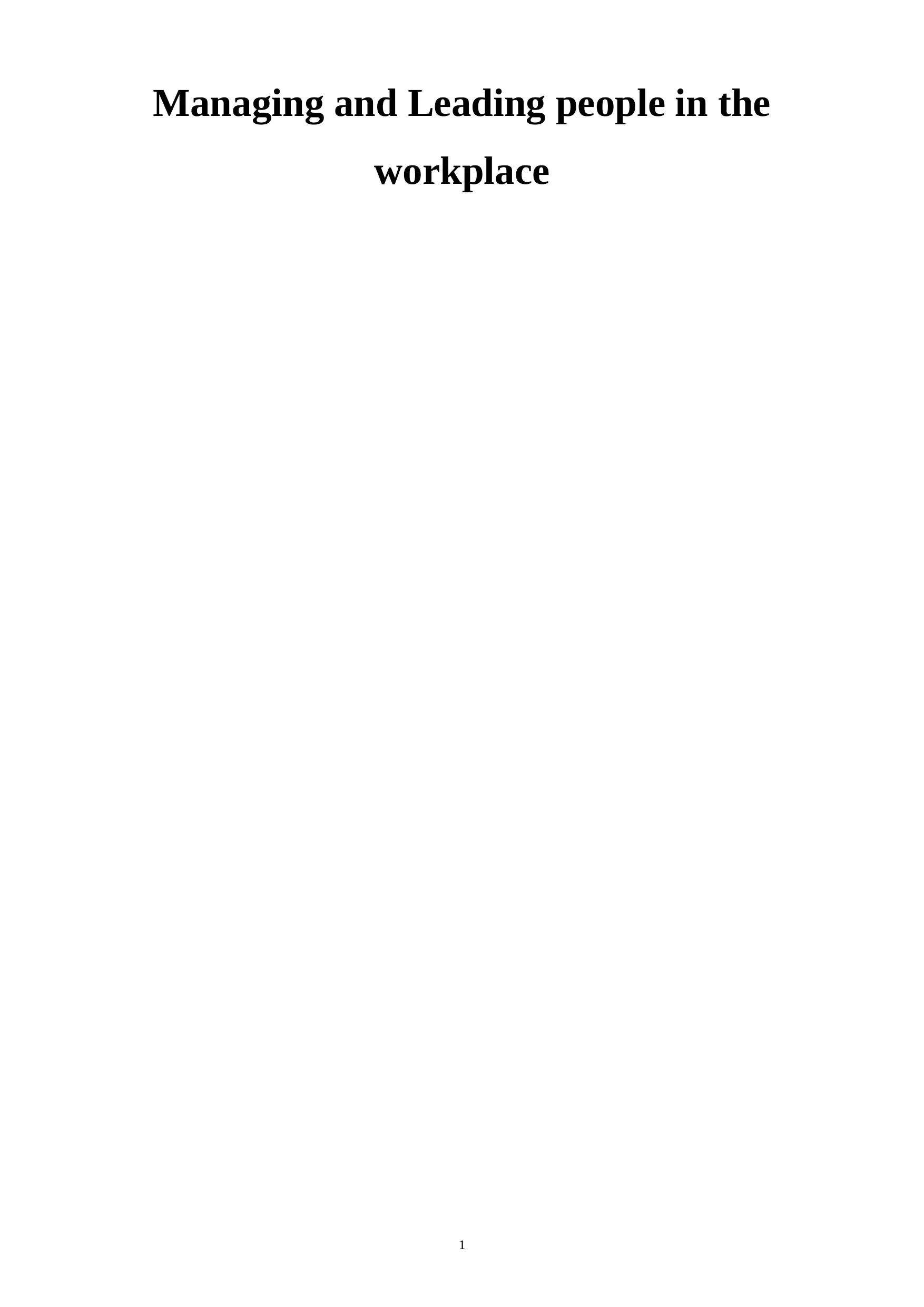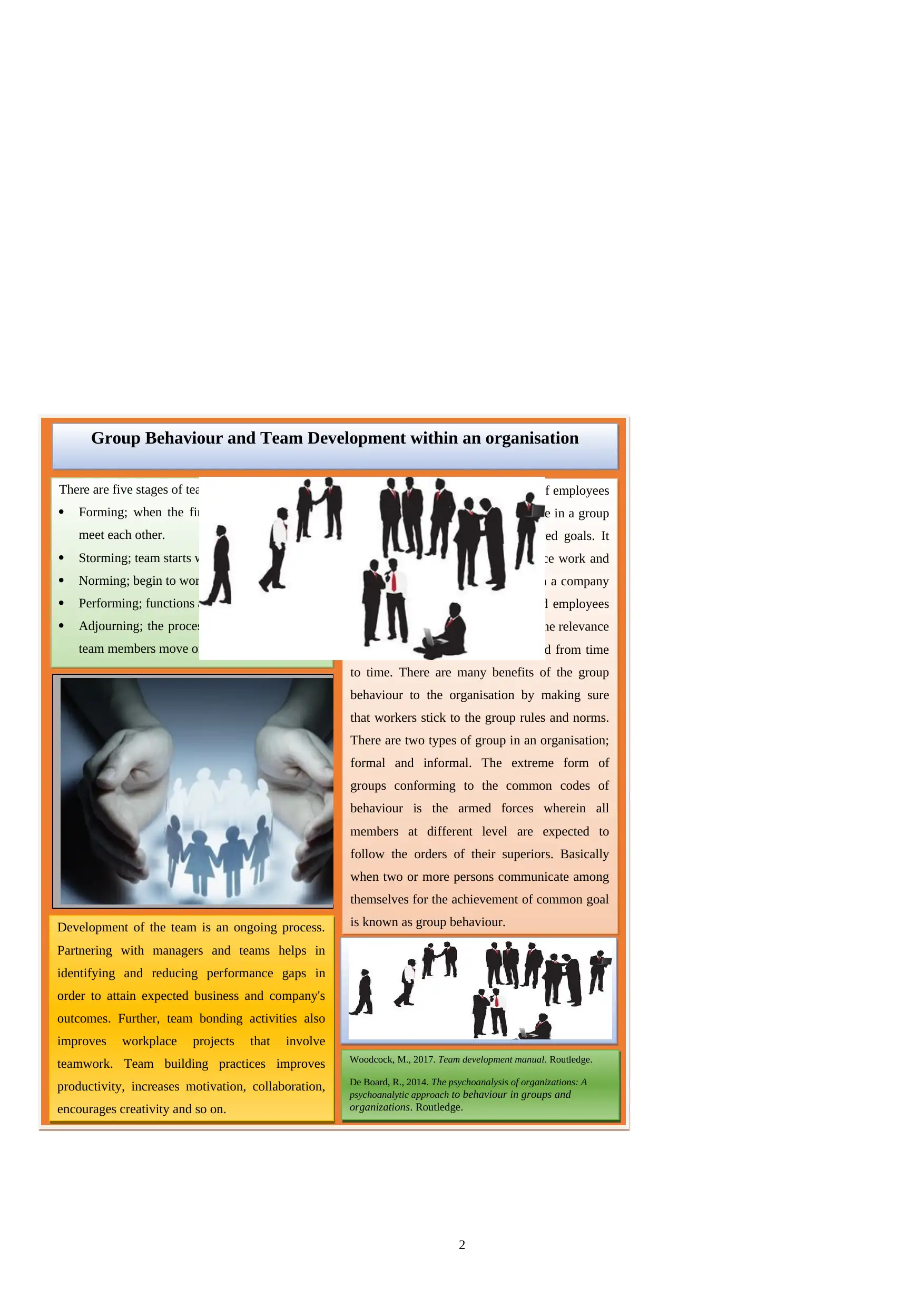Analysing Group Behaviour and Team Development in Modern Organisations
VerifiedAdded on 2021/02/17
|4
|662
|49
Report
AI Summary
This report delves into the critical aspects of team development and group behavior within organizations. It examines the five stages of team development: Forming, Storming, Norming, Performing, and Adjourning, highlighting their significance in achieving team goals. The report emphasizes the importance of team building activities, which enhance productivity, motivation, and collaboration. It also explores the influence of group behavior on workplace dynamics, including the adherence to norms and rules, and distinguishes between formal and informal groups. The report references key literature, such as Woodcock's 'Team development manual' and De Board's 'The psychoanalysis of organizations,' to provide a comprehensive understanding of the subject matter.
1 out of 4










![[object Object]](/_next/static/media/star-bottom.7253800d.svg)